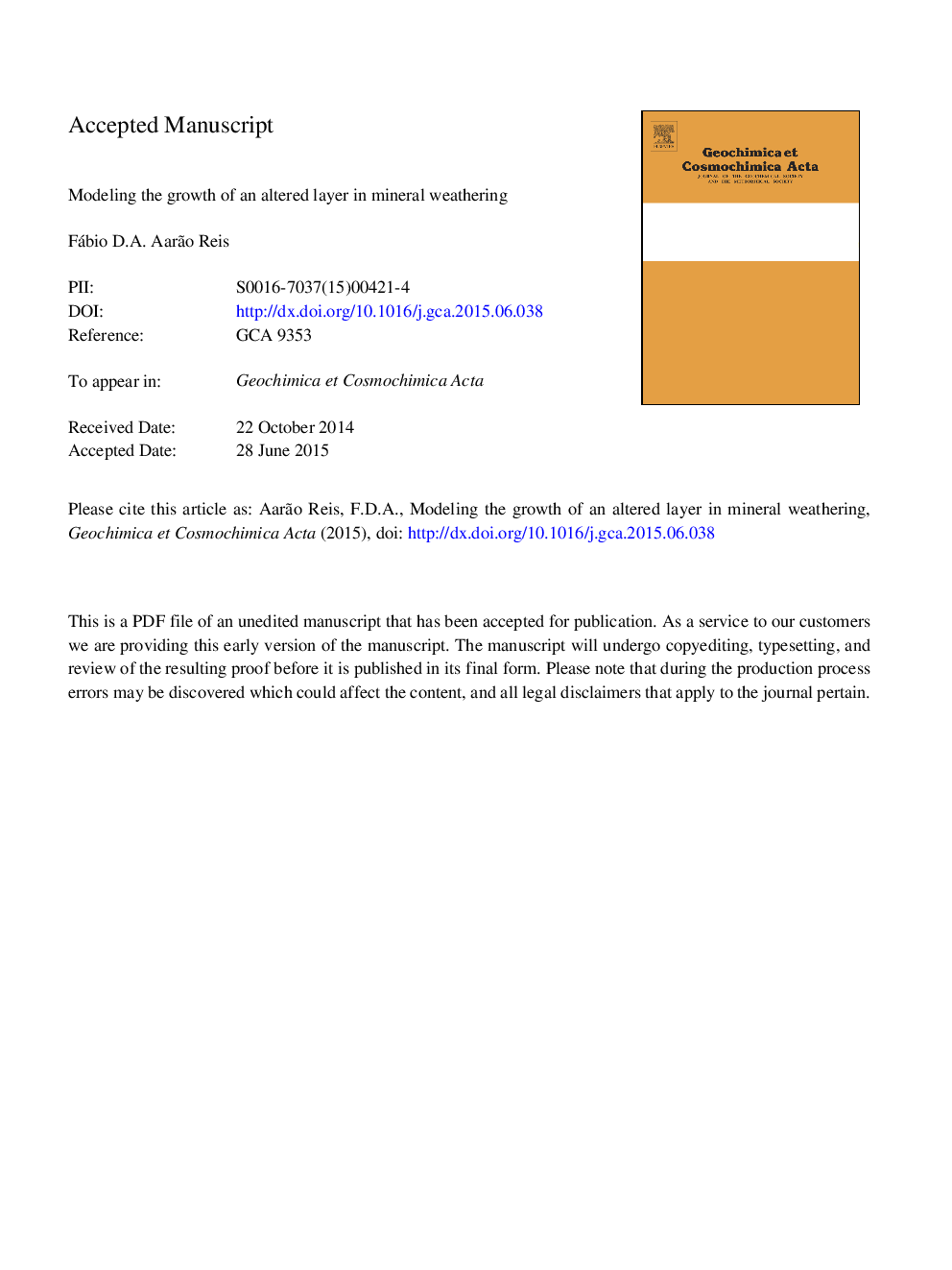| Article ID | Journal | Published Year | Pages | File Type |
|---|---|---|---|---|
| 6437818 | Geochimica et Cosmochimica Acta | 2015 | 38 Pages |
Abstract
A stochastic reaction-diffusion model on a lattice is introduced to describe the growth kinetics of an altered layer in the weathering of a mineral. Particles R represent H2O that permanently fills the outer surface and diffuse on M (mineral) and A (altered) sites with coefficients DM and DA, respectively. The transformation M + R â A occurs with rate r, representing the irreversible formation of the altered material in a region of molecular size, viz. the lattice site of size a. These assumptions agree with predictions of the interfacial dissolution-reprecipitation mechanism, although the model does not describe the chemistry of dissolution reactions or precipitation processes. Scaling concepts are used to distinguish kinetic regimes and their crossovers, and are supported by simulation results. In the short time reactive regime, the thickness of the altered layer increases linearly in time and filling of that layer by particles R is high. In the long time diffusive regime, the altered layer thickness grows as DAt1/2. Modeling of single crystals require very small values of DM, which produces atomically narrow interfaces between the altered material and the mineral and absence of R in the latter, in agreement with recent experimental results. If r
Related Topics
Physical Sciences and Engineering
Earth and Planetary Sciences
Geochemistry and Petrology
Authors
Fábio D.A. Aarão Reis,
